Living with diabetes can feel like a constant battle to keep your blood sugar in check. It's a balancing act that demands careful attention to your diet. While medication is crucial, nature offers its own arsenal of delicious foods that can lend a helping hand. Imagine these foods as your allies, working alongside your medication to keep those sugar levels in a healthy range.
In this journey, we'll explore twelve power foods that can make a real difference. But remember, they're not a substitute for your prescribed medication, but rather a tasty and effective way to support your overall diabetes management plan. Let's dive in and discover how these foods can help you take charge of your health and outsmart diabetes.
1. Resistant Starch: The Carb That's Not a Carb

Picture this: You're enjoying a delicious bowl of oatmeal or a side of perfectly cooked potatoes. Now, imagine those carbs acting more like fiber than sugar, slipping through your digestive system without spiking your blood sugar. That's the magic of resistant starch!
So, what exactly is resistant starch?
Think of it as the undercover agent of the carbohydrate world. It's a type of starch that resists digestion in the small intestine, meaning it doesn't get broken down into glucose and absorbed into your bloodstream. Instead, it travels to your large intestine, where it acts as a prebiotic, feeding the good bacteria in your gut.
How does this benefit people with diabetes?
By bypassing the usual sugar rush, resistant starch helps keep your blood sugar levels stable after meals. It also has a remarkable “second meal effect,” meaning that having resistant starch at lunch can even help lower blood sugar spikes at dinner!
Where can you find this superhero starch?
You'll find it in foods like slightly underripe bananas, cooked and cooled potatoes and rice, legumes, and even some oats. But here's the catch: many of these foods also contain regular starches that do raise blood sugar.
That's where supplements come in. Resistant starch supplements offer a concentrated dose without the extra carbs, making them a fantastic option for those struggling to control their blood sugar or looking to break through a plateau.
Pro tip: Start with a small amount of resistant starch supplement and gradually increase it to avoid any digestive discomfort. And remember, always consult your doctor before making any significant changes to your diet or supplement routine.
2. Ceylon Cinnamon: A Pinch of Sweetness, A Dash of Control

Think cinnamon and you might picture warm apple pie or cozy holiday drinks. But did you know this spice, particularly the Ceylon variety, packs a powerful punch when it comes to blood sugar control?
Ceylon cinnamon, also known as “true cinnamon,” has been prized for its medicinal properties for centuries. It contains compounds that act like tiny gatekeepers, slowing down the absorption of sugar into your bloodstream. This means less dramatic spikes after meals and a smoother ride for your blood sugar levels.
But wait, there's more! Studies suggest Ceylon cinnamon can also give your body's insulin response a boost. Insulin is like a key that unlocks your cells, allowing sugar to enter and be used for energy. By making your cells more sensitive to insulin, cinnamon helps your body use sugar more efficiently.
Now, not all cinnamon is created equal. It's important to choose Ceylon cinnamon over the more common Cassia cinnamon. Cassia contains higher levels of coumarin, a compound that can be harmful to your liver in large amounts. Ceylon cinnamon, on the other hand, is much lower in coumarin, making it a safer choice for daily use.
So, how can you incorporate Ceylon cinnamon into your diabetes management plan?
- Spice up your meals: Sprinkle a pinch on your morning oatmeal, yogurt, or even savory dishes.
- Brew a warm drink: Enjoy a cup of cinnamon tea or add a stick to your coffee.
- Supplement wisely: If you prefer, Ceylon cinnamon capsules are also available.
This graph illustrates the comparison between the effects of cinnamon supplementation and a placebo on fasting blood sugar (FBS) levels over a period of 12 weeks.
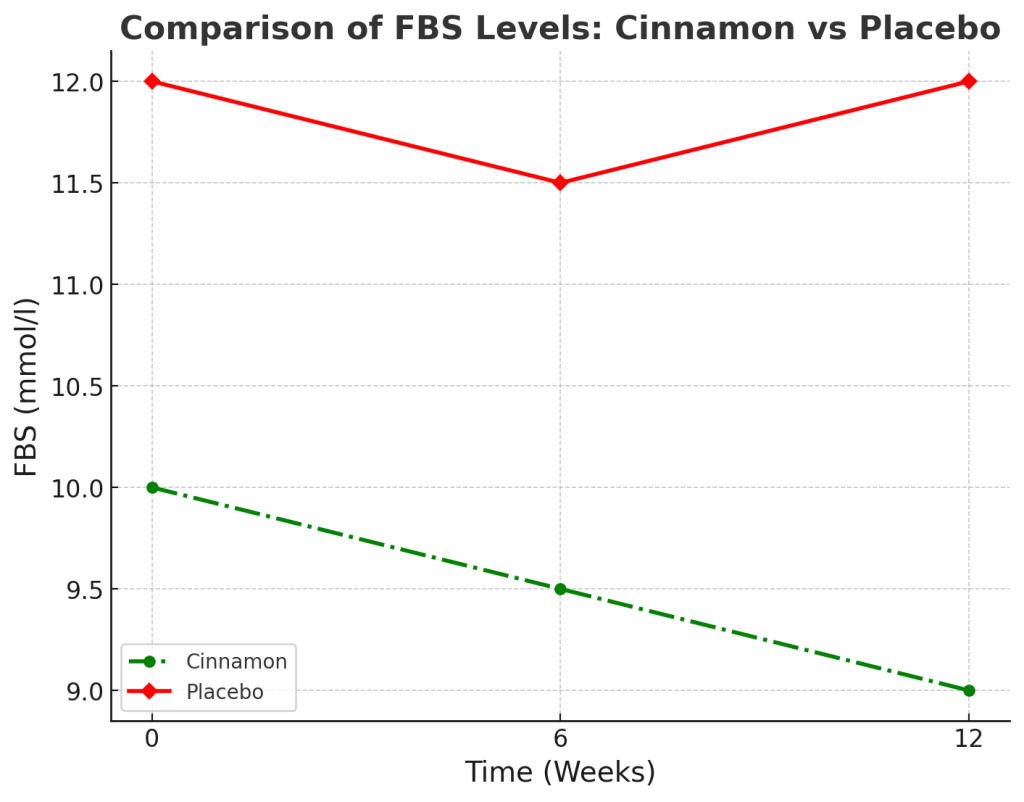
The graph suggests that cinnamon supplementation might be more effective in lowering fasting blood sugar levels over time compared to the placebo, as seen by the consistent decline in the cinnamon group's FBS levels, while the placebo group's levels remained relatively unchanged. According to studies and research, cinnamon has been proven to be more effective in reducing blood sugar levels compared to other supplements, making it a potentially valuable natural option for managing blood sugar, particularly in individuals with type 2 diabetes.
Remember, start with a small amount (around 1 gram per day) and gradually increase it to see how your body responds. And as always, talk to your doctor before adding any new supplements to your routine.
With its unique combination of flavor and function, Ceylon cinnamon can be a delicious and effective way to add a little sweetness and a whole lot of control to your diabetes management plan.
3. Raspberries and Strawberries: Nature's Candy, Diabetes-Friendly

Craving something sweet but worried about your blood sugar? Reach for a handful of raspberries or strawberries! These vibrant berries aren't just a tasty treat; they're also a smart choice for people with diabetes.
Why are berries a better option than other fruits?
It all comes down to their naturally low sugar content. Compared to fruits like apples or mangoes, berries pack a much smaller sugar punch. This means you can enjoy their sweetness without causing a dramatic spike in your blood sugar levels.
But there's more to berries than just low sugar. They're also bursting with antioxidants called anthocyanins. These powerful compounds give berries their rich red and blue hues, and they've been linked to improved blood sugar control and a reduced risk of heart disease in people with type 2 diabetes.
Think of anthocyanins as tiny superheroes fighting inflammation and oxidative stress in your body, helping to keep your blood vessels healthy and your insulin working efficiently.
So, how can you make berries a part of your diabetes-friendly diet?
- Snack smart: Enjoy a handful of fresh or frozen berries as a satisfying and nutritious snack.
- Top your breakfast: Add a colorful burst of flavor to your yogurt, oatmeal, or pancakes.
- Blend into smoothies: Create refreshing and healthy smoothies with berries as the star ingredient.
- Get creative in the kitchen: Incorporate berries into salads, salsas, or even savory dishes for a unique twist.
Remember, variety is key! Mix and match different types of berries to get the full spectrum of nutrients and antioxidants they offer.
With their low sugar content, high fiber, and abundance of antioxidants, raspberries and strawberries are a delicious and guilt-free way to satisfy your sweet tooth while keeping your blood sugar in check. So go ahead, indulge in nature's candy and reap the benefits for your health!
4. Cashews and Almonds: Magnesium Powerhouses for Steady Sugars

When it comes to managing blood sugar, magnesium is a bit of an unsung hero. This mighty mineral plays a vital role in hundreds of bodily processes, including how your body handles glucose. Think of magnesium as the traffic controller for your blood sugar, helping to ensure everything runs smoothly.
Studies have shown a strong link between low magnesium levels and both type 1 and type 2 diabetes. In fact, it's estimated that up to 38% of people with type 2 diabetes may be deficient in this crucial mineral.
So, how does magnesium work its magic?
It seems to influence insulin secretion, the hormone responsible for ushering sugar from your blood into your cells for energy. When magnesium levels are low, your insulin response may become sluggish, leading to elevated blood sugar levels.
This is where cashews and almonds come in. These crunchy nuts are packed with magnesium, making them a delicious and convenient way to boost your intake. Plus, they're low in carbs and offer a satisfying dose of healthy fats and protein, making them a perfect snack for people with diabetes.
But cashews and almonds aren't the only sources of magnesium. You can also find this mineral in leafy greens like spinach, whole grains, and even dark chocolate (in moderation, of course!).
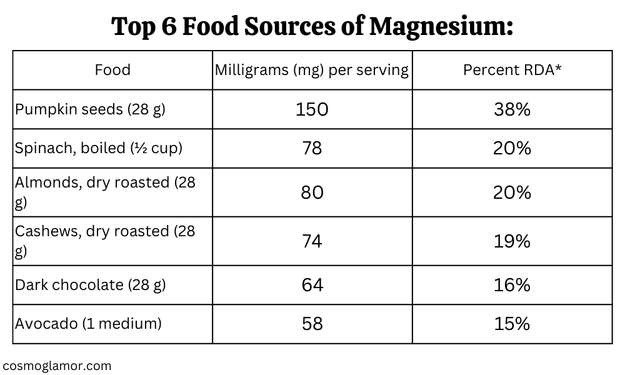
Here are a few ideas to get more magnesium-rich foods into your diet:
- Snack attack: Keep a stash of cashews and almonds on hand for a quick and healthy snack.
- Salad topper: Sprinkle chopped almonds or cashews on your salads for a boost of crunch and nutrition.
- Smoothie booster: Add a handful of nuts to your morning smoothie for a creamy texture and extra magnesium.
- DIY trail mix: Create your own diabetes-friendly trail mix with nuts, seeds, and unsweetened dried fruit.
If you suspect you may be deficient in magnesium, talk to your doctor about getting tested and potentially adding a magnesium supplement to your routine.
Remember, managing diabetes is a team effort, and magnesium is a valuable player on your side. So go ahead and embrace the power of cashews, almonds, and other magnesium-rich foods to help keep your blood sugar steady and your body thriving.
5. Green Tea: Sip Your Way to Better Blood Sugar

Sure, coffee gets a lot of hype, but green tea is a true unsung hero, especially for those managing diabetes. Packed with antioxidants and catechins, it's like a little health elixir that can work wonders for your overall well-being, including keeping your blood sugar in check.
The star of the show is EGCG, a powerful antioxidant that improves insulin sensitivity, helping your body utilize glucose for energy more effectively. Green tea's anti-inflammatory properties also combat chronic inflammation, a common issue in diabetes. Additionally, it can modestly boost metabolism and fat burning, aiding in weight management, which is crucial for blood sugar control.
Studies show that people who regularly drink green tea have a lower risk of developing type 2 diabetes. And for those already living with it, green tea can improve blood sugar control and reduce complication risks.
Ready to give it a try?
- Start with a cup of plain green tea and enjoy its subtle flavor.
- Explore different varieties to find your favorites.
- Add lemon, mint, or ginger for a healthy twist.
- Make it a daily ritual, perhaps as a mid-morning or evening beverage.
Remember, moderation is key. While green tea is generally safe, excessive consumption can lead to side effects.
So, put the kettle on and raise a cup to better blood sugar control. Green tea isn't just tasty; it's a powerful ally in your diabetes management journey.
6. Fenugreek: An Ancient Herb with Modern Benefits

Fenugreek, a staple in many cuisines around the world, has been used for its medicinal properties for centuries. And guess what? Modern science is backing up its traditional use for blood sugar control.
This versatile herb is a good source of soluble fiber, which forms a gel-like substance in your gut. This gel slows down the absorption of glucose into your bloodstream, preventing those dreaded blood sugar spikes after meals. But fenugreek's benefits don't stop there. It also contains compounds thought to improve how your body responds to insulin, the hormone responsible for regulating blood sugar.
Studies have shown that fenugreek can significantly reduce blood sugar levels after meals in both people with and without diabetes. It's like having a natural sidekick helping your body manage glucose more efficiently!
So, how can you add this ancient herb to your modern diet?
- Spice it up: Fenugreek seeds have a slightly bitter, nutty flavor and can be used to add depth to curries, stews, and even bread.
- Brew a tea: Steep ground fenugreek seeds in hot water for a warming and beneficial beverage
- Supplement safely: Fenugreek supplements are available, but it's crucial to consult your doctor before taking them, especially if you're pregnant or breastfeeding.
Remember: Fenugreek is a powerful herb, so start with a small amount (around 2-5 grams per day) and see how your body reacts. It's also best to consume it with meals to maximize its blood sugar-lowering effects.
With its rich history and proven benefits, fenugreek is a valuable addition to any diabetes management plan. So, whether you sprinkle it on your food or take it in supplement form, let this ancient herb lend its modern benefits to your journey towards better blood sugar control.
7. Shirataki Noodles: The Guilt-Free Noodle Swap

Let's be honest, giving up pasta and noodles completely can be a tough ask, especially when you're craving comfort food. But what if there was a way to enjoy your favorite noodle dishes without the blood sugar roller coaster? Enter shirataki noodles, the magical, almost-zero-carb alternative that's a game-changer for people with diabetes.
What are shirataki noodles?
These translucent, slightly chewy noodles hail from Japan and are made from the konjac plant. The main component is glucomannan, a type of soluble fiber that your body can't digest. This means they're incredibly low in calories and carbs, making them a guilt-free swap for traditional noodles.
But it's not just about what they lack; it's also about what they offer.
- Blood Sugar Stabilizer: That glucomannan fiber doesn't just pass through you; it also helps slow down the absorption of glucose into your bloodstream, preventing those sharp spikes after a meal
- Gut Health Booster: Like other soluble fibers, glucomannan acts as a prebiotic, feeding the beneficial bacteria in your gut. A happy gut means better overall health, including improved insulin sensitivity.
- Weight Management Aid: Feeling full and satisfied is key to managing your weight and blood sugar. Shirataki noodles are surprisingly filling, helping you feel content without overdoing it on calories.
Ready to give them a whirl?
- Rinse and drain: Shirataki noodles have a slightly fishy smell when you first open the package, but a good rinse and drain will take care of that.
- Heat them up: You can quickly boil or stir-fry them. They don't need long to cook, so keep an eye on them!
- Get creative: Use them in your favorite pasta dishes, stir-fries, or even soups. Their neutral flavor makes them incredibly versatile.
Bonus tip: Pair shirataki noodles with protein and plenty of veggies for a well-balanced, blood-sugar-friendly meal.
So, next time you're craving noodles, don't deprive yourself! Swap in some shirataki noodles and enjoy a delicious, satisfying meal without the worry of blood sugar spikes. It's a simple switch that can make a big difference in your diabetes management journey.
8. Dark Chocolate: A Treat That's Actually Good for You?

Yes, you read that right. We’re talking about chocolate, and not just any chocolate, but the dark, decadent kind. Now, before you raid the candy aisle, let's talk about why dark chocolate can actually be a friend, not a foe, when it comes to managing diabetes.
The key lies in cocoa, the main ingredient in chocolate. Cocoa is packed with beneficial compounds called flavanols, which have been shown to improve several aspects of health that are important for people with diabetes.
How do flavanols help?
- Improved Insulin Sensitivity: They help your cells become more receptive to insulin, making it easier for your body to use glucose for energy.
- Reduced Blood Pressure: Flavanols help relax blood vessels, which can lead to lower blood pressure, a crucial factor in preventing diabetes complications.
- Better Blood Sugar Control: By improving insulin sensitivity and reducing inflammation, flavanols contribute to overall better blood sugar regulation.
But hold on, not all chocolate is created equal.
- Go Dark or Go Home: The darker the chocolate, the higher the cocoa content and the greater the flavanol benefits. Aim for at least 70% cocoa, but 85% or higher is even better.
- Watch the Sugar: Even dark chocolate contains some sugar, so moderation is key. A small square or two can satisfy your sweet tooth without sabotaging your blood sugar goals.
- Choose Quality: Opt for dark chocolate with minimal added ingredients and no artificial sweeteners. Look for brands that emphasize the cocoa percentage and flavanol content.
Here are a few tips to enjoy dark chocolate mindfully:
- Savor it slowly: Take small bites and let the chocolate melt in your mouth to fully appreciate its flavor and texture.
- Pair it with healthy fats: Combine dark chocolate with nuts or seeds for a satisfying and blood-sugar-balancing snack.
- Get creative: Use dark chocolate chips in homemade trail mix or sprinkle cocoa nibs on yogurt or oatmeal.
Remember, dark chocolate is a treat, not a free pass to indulge. But when enjoyed in moderation and as part of a balanced diet, it can offer a delicious and potentially beneficial addition to your diabetes management plan.
9. Apple Cider Vinegar: A Tangy Tonic for Sugar Control

Apple cider vinegar, a kitchen staple with a long history of folk remedies, may also play a role in blood sugar management. Studies suggest it can enhance glucose metabolism, helping your body use sugar more effectively.
Research has shown that consuming apple cider vinegar before or during meals can improve sugar uptake by your cells and reduce blood sugar, insulin, and triglyceride levels. It's like giving your body a little nudge to handle glucose more efficiently.
While apple cider vinegar is the most popular choice, other types of vinegar may offer similar benefits. So, how can you incorporate this tangy tonic into your routine?
- Pre-meal elixir: Mix a tablespoon of apple cider vinegar with water and drink it before meals.
- Salad dressing: Create a vinaigrette with apple cider vinegar, olive oil, and herbs for a healthy and flavorful addition to your salads.
- Marinade: Use apple cider vinegar as a base for marinades to add flavor and tenderness to meats.
Remember, start with small amounts and gradually increase to assess your tolerance. And if you have any concerns, consult your doctor first.
Though not a miracle cure, apple cider vinegar can be a simple and tasty way to support your blood sugar goals. So, add a little tang to your meals and enjoy its potential benefits for your health!
10. Stevia: The Natural Sweetener That Won't Spike Your Sugar

For those with a sweet tooth and diabetes, Stevia is a dream come true. This natural sweetener, derived from a South American plant, offers all the sweetness of sugar without any of the calories or blood sugar spikes. It's like having your cake and eating it too!
But Stevia's benefits go beyond just zero calories. Some studies suggest it may even have a positive impact on insulin function, helping your body regulate blood sugar more effectively.
Compared to artificial sweeteners, Stevia has been shown to lower both blood sugar and insulin levels after meals, making it a smarter choice for people with diabetes.
So, next time you're looking to sweeten your coffee, tea, or dessert, reach for Stevia instead of sugar. It's a simple swap that can make a big difference in managing your blood sugar levels and satisfying your cravings without the guilt.
11. Fatty Fish: Omega-3s for the Win

When we think of heart-healthy foods, fatty fish like salmon, tuna, and sardines often come to mind. Their claim to fame? Omega-3 fatty acids, those superstar nutrients renowned for their cardiovascular benefits. But here's the exciting news: these same omega-3s can also be a game-changer for blood sugar control.
Think of omega-3s as tiny firefighters, working tirelessly to quell inflammation throughout your body. Chronic inflammation is a common troublemaker in diabetes, contributing to insulin resistance and increasing the risk of complications. By keeping inflammation in check, omega-3s help your body use insulin more effectively and keep blood sugar levels stable.
But that's not all. These healthy fats also seem to have a direct impact on insulin sensitivity, making your cells more receptive to this crucial hormone. It's like giving your cells a little nudge, encouraging them to open their doors wider for glucose to enter and be used for energy.
And let's not forget the heart-protective benefits of omega-3s. People with diabetes are at a higher risk of heart disease, and these fatty acids help lower triglycerides, reduce blood pressure, and improve overall cardiovascular health. It's a win-win situation!
So, how can you make fatty fish a regular part of your diabetes-friendly diet?
- Aim for at least two servings per week. That could be a grilled salmon fillet, a tuna salad sandwich, or a simple sardine snack.
- Get creative with your cooking methods. Try baking, grilling, poaching, or even pan-frying with a healthy oil like olive oil.
- Experiment with different types of fatty fish. Salmon, tuna, mackerel, sardines, and herring are all excellent choices.
If you're not a big fan of fish, don't worry. Omega-3 supplements are available, but it's always best to talk to your doctor first to determine the right dosage and type for you.
So, dive into the world of fatty fish and let those omega-3s work their magic! Your heart, your blood sugar, and your overall health will thank you.
12. Leafy Greens: Nutrient Powerhouses for Blood Sugar Balance

Think of leafy greens as the unsung heroes of the produce aisle, quietly working their magic to keep your blood sugar in check. These nutritional powerhouses are packed with vitamins, minerals, and fiber, all of which play a vital role in managing diabetes.
Why are leafy greens so beneficial?
- Low in Carbs, High in Fiber: Leafy greens are naturally low in carbohydrates and high in fiber, which slows down the absorption of sugar into your bloodstream. This helps prevent those dramatic spikes and crashes that can wreak havoc on your energy levels and overall health
- Rich in Magnesium: As we discussed earlier, magnesium is crucial for insulin sensitivity and blood sugar regulation. Leafy greens like spinach and kale are excellent sources of this essential mineral
- Vitamins and Antioxidants Galore: Leafy greens are bursting with vitamins like A, C, and K, as well as antioxidants that protect your cells from damage. These nutrients work together to support overall health and reduce the risk of diabetes complications.
Ready to add more leafy greens to your plate?
- Salad superstar: Make a vibrant salad with a mix of leafy greens, colorful vegetables, and a lean protein source for a balanced and satisfying meal.
- Smoothie sneak: Add a handful of spinach or kale to your morning smoothie. You won't even taste it, but your body will thank you!
- Sautéed sides: Lightly sauté greens with garlic and olive oil for a quick and flavorful side dish.
- Soup it up: Toss a handful of chopped greens into your soups and stews for an extra boost of nutrients.
Remember: The key is variety. Don't just stick to one type of leafy green. Mix it up with spinach, kale, collard greens, Swiss chard, arugula, and more to get the full spectrum of benefits.
So, next time you're at the grocery store, don't overlook those leafy greens. They may not be as flashy as some other fruits and vegetables, but they pack a powerful punch when it comes to managing your blood sugar and supporting your overall health.
Conclusion:
Managing diabetes doesn't have to be a constant struggle. With a little knowledge and a dash of creativity, you can harness the power of food to take control of your health. Remember, these twelve power foods are not magic bullets, but they can be valuable allies in your journey towards better blood sugar management. Combine them with a balanced diet, regular exercise, and proper medication, and you'll be well on your way to living a vibrant and fulfilling life with diabetes.
Remember, food is medicine. So let's use it wisely to nourish our bodies, tame the sugar beast, and embrace a healthier, happier future!
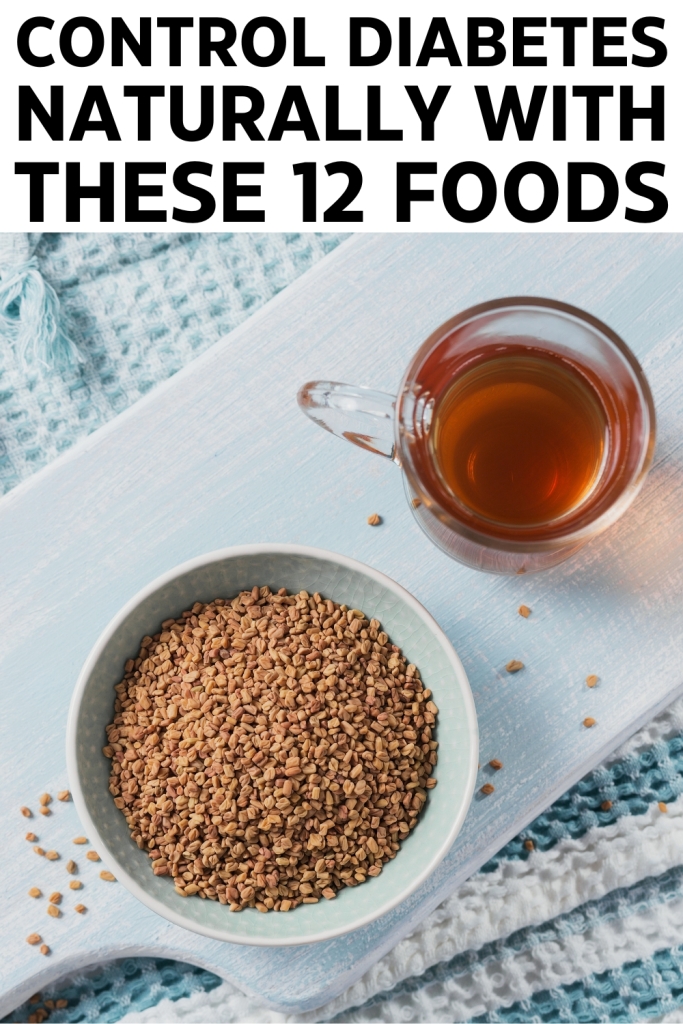
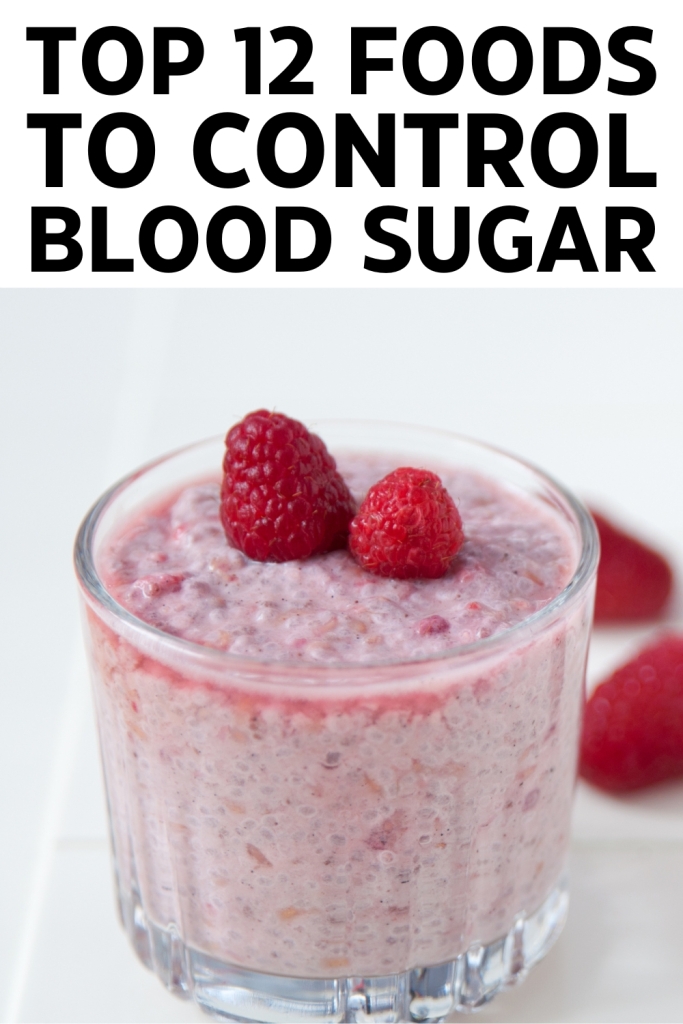



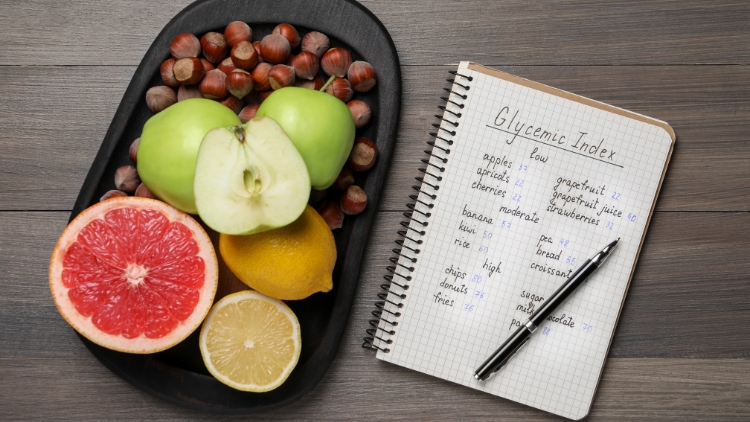
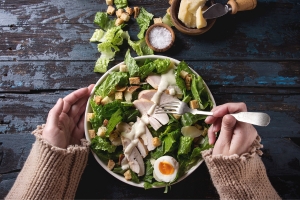

12 Responses
This is a great list! I’ve been struggling to keep my blood sugar down, and I’m excited to try some of these foods. I’m a little confused about resistant starch, though. How can I tell if a food has resistant starch, and is it really that different from regular starch?
Hi Mary, thanks for your comment! I’m glad you found the list helpful. Resistant starch can be a bit tricky, but it’s worth understanding. Here’s the thing: regular starch gets digested quickly and turns into glucose, raising your blood sugar. Resistant starch, on the other hand, resists digestion in the small intestine and acts more like fiber.
It’s hard to know the exact amount of resistant starch in a food just by looking at it, but here are some general guidelines:
Cooking and cooling: Cooking starchy foods like potatoes, rice, and pasta and then letting them cool increases their resistant starch content.
Unripe bananas: Slightly green bananas have more resistant starch than fully ripe ones.
Legumes: Beans, lentils, and chickpeas are naturally good sources of resistant starch.
The difference between resistant starch and regular starch is significant for blood sugar control. Resistant starch has a much lower glycemic index, meaning it causes a slower and smaller rise in blood sugar. If you’re struggling to manage your blood sugar, incorporating more resistant starch into your diet can be a helpful strategy. You can also consider a resistant starch supplement, but always talk to your doctor first!
I’ve heard conflicting things about vinegar and blood sugar. Does it really work, and are there any side effects I should be aware of? Also, what’s the best type of vinegar to use?
Hi Linda, you’re right to question things! It’s always good to be informed. Research does suggest that vinegar, particularly apple cider vinegar, can improve insulin sensitivity and lower blood sugar levels after meals. It’s thought to work by slowing down the emptying of the stomach and improving glucose uptake by the cells.
As for side effects, some people may experience digestive discomfort, such as nausea or indigestion, especially when starting out. It’s also important to dilute vinegar with water, as undiluted vinegar can erode tooth enamel.
While apple cider vinegar is the most studied, other types of vinegar, like white vinegar or red wine vinegar, may offer similar benefits. The key is the acetic acid, which is the main active component.
I recommend starting with a small amount, like 1-2 teaspoons diluted in water, before meals and see how your body responds. You can gradually increase the amount if you tolerate it well. And, as always, it’s a good idea to check with your doctor, especially if you’re on any medications.
Okay, this is helpful, especially the part about dark chocolate! Finally, a diet that allows chocolate! But seriously, I’m a bit confused about the cinnamon. You mention Ceylon cinnamon specifically. Is the regular stuff I buy at the grocery store (the cheap stuff, let’s be honest) not good? Am I going to have to take out a second mortgage to afford fancy cinnamon? 😂
Hi Deborah, thanks for your comment! I’m glad you’re excited about the dark chocolate – who isn’t?! 😉 You’re right to ask about the cinnamon. Most of the cinnamon you find in regular grocery stores is Cassia cinnamon, which is cheaper, but it contains higher levels of coumarin, which can be a concern in large amounts. Ceylon cinnamon (“true cinnamon”) has much lower coumarin levels, making it a safer option for regular consumption.
Don’t worry, you don’t need to break the bank! While Ceylon cinnamon can be a bit more expensive, you can usually find it at health food stores or online without costing a fortune. You don’t have to completely ditch your regular cinnamon, but if you’re planning on using it regularly for blood sugar management, switching to Ceylon is a good idea. Think of it as a small investment in your health, not a second mortgage! 😉
This article is great, lots of good info. I’m especially intrigued by the shirataki noodles. Sounds like magic! But…are they actually tasty? Or are they one of those healthy things that taste like sadness? I’m picturing eating rubber bands with sauce. 😅
Hi Michelle, thanks for your question! I know what you mean about healthy things sometimes tasting…less than exciting. Shirataki noodles have a very neutral flavor, which is actually a good thing! They take on the flavor of whatever sauce or seasonings you use. The texture is a bit different – some people describe it as slightly chewy or even a bit rubbery if not prepared correctly.
The key is to rinse them really well to get rid of the initial smell and then cook them properly. Don’t overcook them! If you pair them with a flavorful sauce, veggies, and protein, you won’t even notice the slightly different texture. They definitely don’t have to be a sad, rubbery experience! Think of them as a blank canvas for your culinary creations. Give them a try – you might be pleasantly surprised! 😊
Wow, this is a lot of info! I’m bookmarking this for sure. I knew about cinnamon and berries, but resistant starch? That’s a new one for me. Sounds kinda weird, to be honest. 😂 Do I just, like, eat a cold, cooked potato? And are we talking sweet potatoes or regular? Also, dark chocolate is good for me? You’re speaking my language! 😉 What’s your favorite brand?
Hi Scarlett! Glad you found the article helpful! Resistant starch can seem a bit odd at first, but it’s pretty amazing stuff. Yes, eating cooled cooked potatoes (regular potatoes, sweet potatoes, or even rice) is one way to get it. The cooling process is key! They need to be cooked first, then thoroughly cooled in the fridge. If you’re not a fan of cold potatoes, don’t worry, there are resistant starch supplements that are easy to use as well. As for dark chocolate, it’s a win, right?! I personally love brands that are 85% cacao or higher and have minimal added ingredients. Look for ones that list the cocoa percentage on the label. Endangered Species, Theo and Alter Eco are usually good options. Experiment and find one you enjoy, but remember it is still a treat to be enjoyed in moderation. Let me know what you think!
Okay, shirataki noodles sound…interesting. Are they actually good? I’m a pasta lover, so this could be a game-changer. Also, I’ve tried apple cider vinegar before, and blech! 🤢 Any tips on making it more palatable? I really want to try and get my blood sugar under control, but some of this stuff is hard to swallow (literally!).
Hi Victoria! Shirataki noodles definitely have a unique texture, but many people find them to be a great substitute for pasta. It is important to rinse them very well under cold water before cooking, and then a quick pan-fry helps. They are a bit more ‘chewy’ than regular pasta, but they absorb flavors well, so they’re great in stir-fries or with a tasty sauce! As for the apple cider vinegar, I hear you! Try diluting it in a big glass of water with a squeeze of lemon or a few berries for flavor. You can also add a tiny pinch of stevia if you need a touch of sweetness. Another option is to use it in salad dressings – the oil and other ingredients help mask the strong taste. Don’t give up! It might take some experimenting, but I am sure you can find a way to make it work for you.